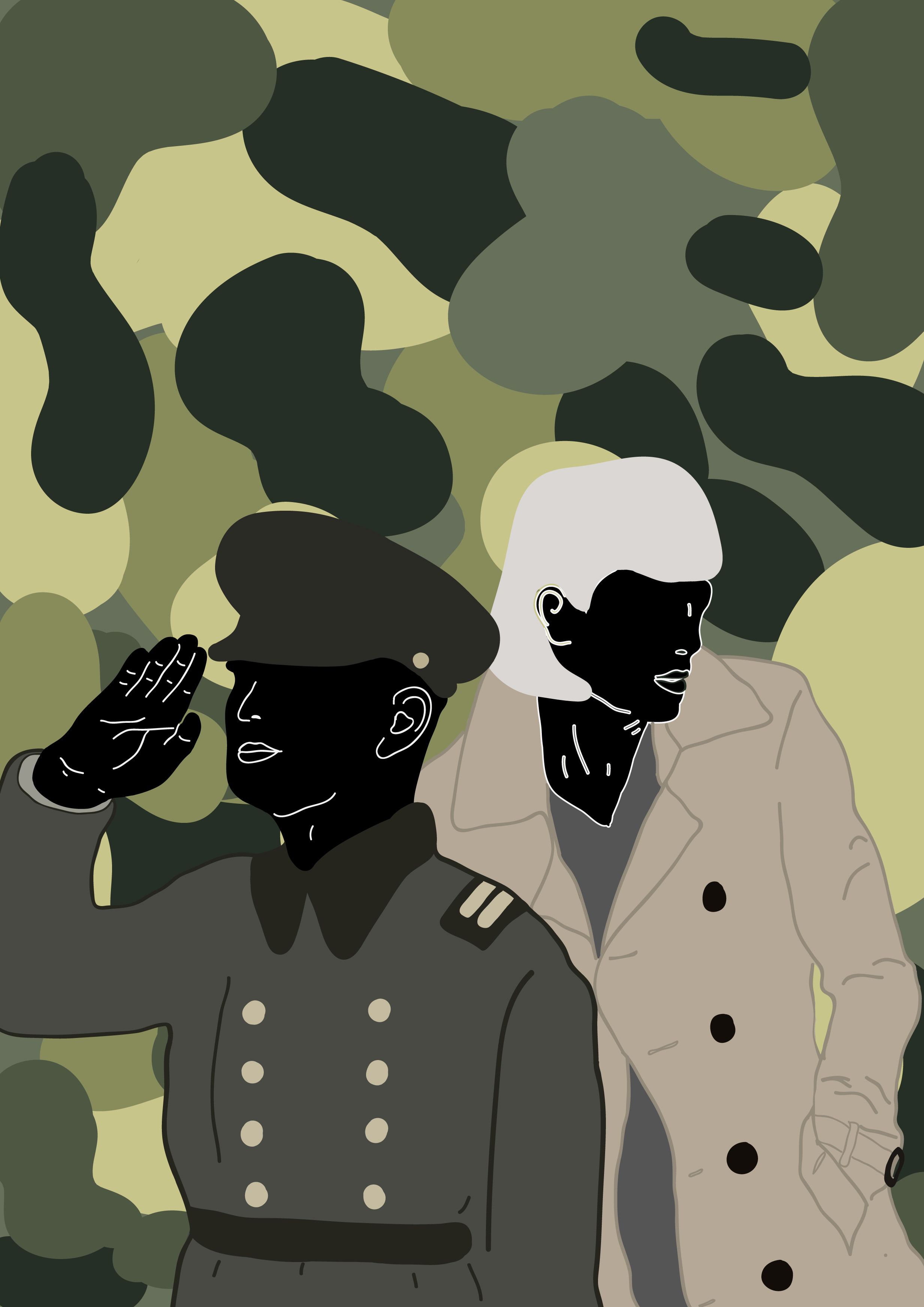by Amelia Mills | @MillsA17
While military might has been building borders, shaping national identity and defending the front line, it’s also been building our wardrobes, shaping our silhouettes and marching new trends to the forefront of our runways.
But how did these clothes – built for endurance, durability and the safety of soldiers – get there? How did they make their way from avoiding sword tips and dodging bullets to adorning the backs of models in Milan and then mannequins behind H&M’s glistening windows?
Firstly, a distinction needs to be drawn between clothes developed during wartime and those created post-war: garments made during the war effort were dictated by the global climate, while modern forms of military fashion are instead influenced by the historic army style.
In the midst of World War Two and the Great Depression, designers were forced to tailor civilian clothing to suit the bleak and impoverished economic climate. As manufacturing suffered, food rations were handed out and government struggled to provide for soldiers on the frontlines, designers were compelled to produce clothing with efficiency. Silks and organza were replaced with stiff linens and wool, and shapes became structured to economise on material. Civilian styles began to echo soldier’s uniforms, which were designed and produced in the most frugal, cost-effective way.
Churchill’s British Government imposed the ‘Utility Clothing Scheme’, a wartime regulation that meant fashions became boxier and less embellished due to necessity. The amount of fabric and style of garment were tightly regulated, and redundant fashionable details such as pocket flaps were banned. Because – let’s face it – who cares about pocket flaps when your country’s at war. As women joined in the war effort, they wore uniforms just as the men did, which resulted in designers creating military-style clothes that found their way into civilian wardrobes.
Well after the war ended, the utilitarian, military-esque styles of the troops were embraced in a very different spirit by youth subcultures. Fashion theorist Elizabeth Wilson recalls how army surplus gear in the 1970s was “de rigueur if you were in the alternative left, a libertarian, feminist, anarchist or general revolutionary.”
The notion of sending an anti-establishment statement can be seen in punk fashion and 90s grunge revival, both of which embrace the grittier forms of military style. These fashions can often be spotted on angsty teenagers with spikey hair that lurk around Flinders Street Station, wearing Doc Martens, camouflage vests and jackets covered with zips, which were created during World War One.
While the sandal-wearing period of the 70s and punk enthused era of the 80s were times when military fashion still sent a definitive message, it seems nowadays the style has, to an extent, lost its historical and cultural meaning. As garments such as the trench coat, military jacket and combat boots have become omnipresent in our daily sartorial lives, their meaning has become, as described by RMIT’s Head of Fashion Robyn Healy, “diluted”.
“In the 70s and 80s wearing military clothes would have had more of an impact and made a real statement,” she says. “I think there’s been a desensitisation because the style is so common in modern wardrobes.”
The reasons for army-orientated designs in modern society are many and varied: the popularity of the style among celebrities, for example, is a definite contributing factor. Stars such as Jimi Hendrix, the Beatles, Michael Jackson and Rihanna have all (at some point) embraced and endorsed warzone clothing. Hell, even Lady Gaga recently wore a military jacket embellished with human hair epaulettes. But that’s just kinda weird.
Another reason for the style’s lingering nature is the desire of fashion designers to make a statement about war. High-fashion designers, including Burberry, Giorgio Armani, and Jean Paul Gaultier, have all at some point embraced military style to make reference to military threats that exist today. According to Professor Healy these designers utilise the trend to remind us of wars presence and potency in our society.
“If you look at a particular designer they often use the military style for making a statement about something…sometimes they might even be messages about peace as opposed to war”, she explains. “It’s about making people aware the world is going through a period of unrest.”
Since the very first gold button was stitched to a lieutenant’s jacket, it seems military fashion was destined to be a constant sartorial influence within the fashion industry. Over time, designers have shaped and adapted military-style clothing to make statements on international runways and suit modern day civilian lifestyle.
Military fashion’s significance can often go unnoticed. So the next time you rock your Zara bomber jacket, hang around Flinders Street Station in your Doc Martens, or wear your human hair encrusted jacket, give a little thought to your garment’s heritage; it might just be related to the clothes of our frontlines. Except the hairy jacket– that’s definitely just a Lady Gaga thing.
Art by Lisa Vu


